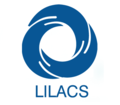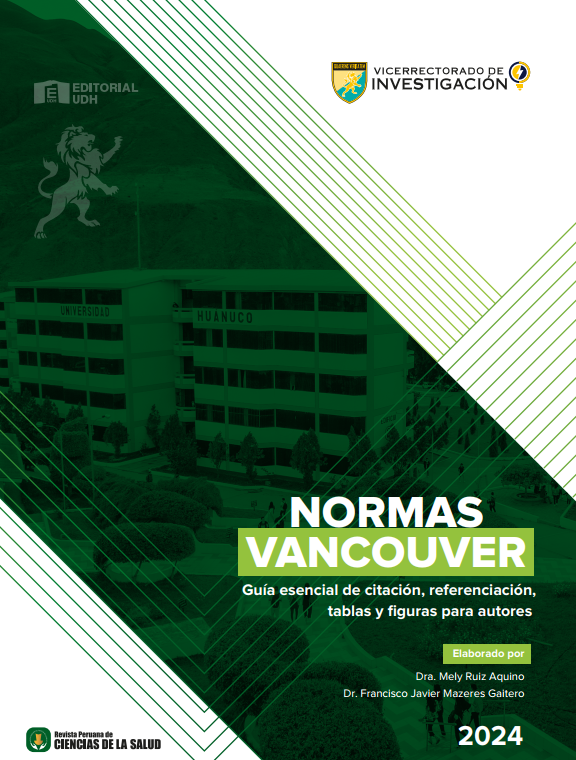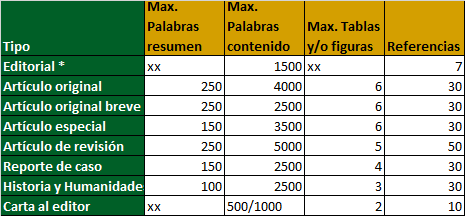Seroprevalencia de infección por dengue y factores asociados en residentes del centro poblado Fila Alta
DOI:
https://doi.org/10.37711/rpcs.2021.3.2.312Palabras clave:
dengue, estudios seroepidemiológicos, ensayo de inmunoadsorción enzimática, factores predisponentesResumen
Objetivo. Determinar la seroprevalencia de infección por dengue e identificar los factores asociados en los residentes del centro poblado Fila Alta, distrito de Jaén, departamento de Cajamarca, durante los meses de septiembre a diciembre del 2019. Métodos. Estudio observacional, transversal, prospectivo con diseño no experimental de enfoque descriptivo- correlacional. La muestra estuvo conformada por 172 pobladores de ambos géneros y el muestreo fue aleatorio simple. La seroprevalencia de anticuerpos IgG se determinó mediante la prueba inmunoenzimática indirecta (ELISA) y se aplicó una encuesta estructurada para identificar los factores asociados al dengue. Asimismo, se utilizó la prueba de chi cuadrado para establecer la relación entre las variables estudiadas. Resultados. El 19,2% de pobladores presentaron anticuerpos IgG frente al dengue, siendo más frecuente en las mujeres (12,2 %). El 9,3 % (OR: 0,18; RP: 0,16; IC95%: 0,09-0,23) de estudiantes y el 5,8 % (OR: 0,31 RP: 0,24; IC95 %: 0,11-0,37) de amas de casa resultaron seropositivos al dengue. Además, el 15,7 % (OR: 0,28; RP: 0,22; IC95 %: 0,15- 0,29) de pobladores seropositivos se abastecía de agua a través de tanques y el material más utilizado en la construcción de sus viviendas fue el adobe (8,7 %; OR: 0,94; RP: 0,48; IC95 %: 0,30-0,66). Conclusiones. La seroprevalencia de la infección por dengue es alta y está relacionada significativamente con la ocupación de los pobladores y el material de las paredes de sus viviendas.
Descargas
Referencias
1. Pereyra Y, Samudio M, Ojeda A, Cabello Á. Seroprevalencia de la infección por dengue en el distrito de ChacoParaguayo. Estudio Poblacional. Rev Chil Infectol. [Internet] 2015 Dic; 32(6): 618-27 [Consultado 2020 Dic20]. Disponible en: http://dx.doi.org/10.4067/S0716-10182015000700002
2. Dengue y dengue grave [Internet] Ginebra: Organización Mundial de la Salud; 2020 [Consultado 2021 Feb20]Disponible en: https://www.who.int/es/news-room/fact-sheets/detail/dengue-and-severe-dengue
3. Frantchez V, Fornelli R, Sartori G, Arteta Z, Cabrera S, Sosa L, et al. Dengue en adultos: diagnóstico, tratamiento yabordaje de situaciones especiales. Rev. Méd. Urug. [Internet] 2016 Abr; 32(1): 43-51 [Consultado 2021 Feb 18]Disponible en: http://www.scielo.edu.uy/scielo.php?script=sci_arttext&pid=S1688-03902016000100006&lng=es
4.World Health Organization (WHO). Global strategy fordengue prevention and control 2012-2020. Geneva:WHO; 2012.
5. Dengue [Internet]. Perú: Organización mundial de lasalud; 2020 [Consultado 2021 Feb 20] Disponible en: https://www.paho.org/per/index.php?option=com_content&view=article&id=4079:dengue&Itemid=0#:~:-text=En%20el%20Per%C3%BA%2C%20durante%20el,fue%20de%200%2C12%25
6. Reyes A, Guzmán MG, Ramírez R, Hernández C, GarcíaG, Torres DM, et al. Impacto económico del dengue enpacientes y familiares. Rev Cuba Med Tropical [Internet]2019 Jun; 71(3):1-19 [Consultado 2021 Mar 18 Mar] Dis-ponible en: http://revmedtropical.sld.cu/index.php/me-dtropical/article/view/419
7. Luna H, Gómez G, Cando Wilson C. Factores epidemiológicos asociados a dengue en pacientes adultos. Revista Científica Mundo de la Investigación y el Conocimiento[Internet] 2018 Jun; 2 (2): 700-709 [Consultado 2021 Mar 18]Disponible en: http://dx.doi.org/10.26820/recimun-do/2.(2).2018.700-709
8. Villa LP. Factores de riesgo asociados al dengue. Rev.enferm. vanguard. [Internet] 2017 Ene; 5(1): 1-2 [Consultado 2021 Mar 18]. Disponible en: https://doi.org/10.35563/revan.v5i1.221
9. Arredondo-García JL, Méndez-Herrera A, Medina-CortinaH. Arbovirus en Latinoamérica. Acta pediátrica de México[Internet] 2016 Mar; 37(2): 111-131 [Consultado 2021 Feb] Disponible en: http://www.scielo.org.mx/scielo.php?script=sci_arttext&pid=S018623912016000200111&ln-g=es&tlng=es
10. Blacksell SD, Newton PN, Bell D, Kelley J, Mammen MP,Vaughn DW, et al. The comparative accuracy of 8 commercial rapid immunochromatographic assays for thediagnosis of acute dengue virus infection. Clin Infect Dis. [Internet] 2006 Abr; 42(8):1127-34 [Consultado 2021 Feb 20] Disponible en: https://doi.org/10.1086/501358
11. Niño S, Yong A. Conocimientos y prácticas en prevención de dengue post fenómeno del niño costero. Tumán - Chiclayo, 2018 [Tesis de grado]. Lambayeque: Universidad nacional Pedro Ruiz Gallo; 2018.
12. Vircell Microbiologists. Dengue ELISA IgG - Productopara diagnóstico in vitro [Internet] [Consultado 2019Sep 20] Disponible en: https://www.vircell.com/media/INSERTS/DENGUE%20ELISA%20IgG_G1018_ES.pdf
13. Velandia ML, Castellanos JE. Virus del dengue: estructura y ciclo viral. Infectio. [Internet] 2011 Feb; 15: 33-43[Consultado 2021 Mar 15] Disponible en: http://dx.doi.org/10.1016/S0123-9392(11)70074-1
14. Neira M. Factores de riesgo asociados a infección pordengue en familias del centro poblado Río Seco, El Porvenir, Trujillo, La Libertad, 2017 [Tesis de licenciatura enEnfermería] La Libertad: Universidad Cesar Vallejo; 2018.
15. Molineros LF, Pinzón Gómez EM, Rengifo García NE,Daza CF, Hernández-Carrillo M, Ortiz ME, et al. Seroprevalencia de dengue en municipios con transmisión hiperendémica y mesoendémica, Valle del Cauca, Colombia. Rev Cubana Salud Pública[Internet] 2020 Abr; 46(2): 1-20 [Consultado 2021 Mar 2] Disponible en: http://www.revsaludpublica.sld.cu/index.php/spu/article/view/1256
16. Cabezas C, Fiestas V, García-Mendoza M, Palomino M, Mamani E, Donaires F. Dengue en el Perú: a un cuartode siglo de su reemergencia. Rev Peru Med Exp SaludPublica. 2015; 32(1):146-56.
17. Gutiérrez C, Montenegro J. Conocimiento sobre dengue en una región endémica de Perú. Estudio de basepoblacional. Acta Médica Peruana [Internet] 2017 Oct;34(4): 283-288 [Consultado 2021 Mar 2] Disponible en:http://www.scielo.org.pe/scielo.php?script=sci_arttex-t&pid=S1728-59172017000400005&lng=es
18. Caraballo A, Chica I, Ocampo M. Comportamiento epidemiológico del Dengue, Chikungunya y Zika. Córdova-Colombia. Rev. Colombiana Salud Libre [Internet]2017 Dic; 12(2): 7-14 [Consultado 2021 Mar 2] Dispo-nible en: https://doi.org/10.18041/1900-7841/rcsli-bre.2017v12n2.1725
19. Castañeda-Porras O, Segura O, Garon-Lara E, Manosalva-Sánchez C. Conocimientos, actitudes y prácticas frente al control del vector Aedes aegypti, Villanueva. Casanare, Colombia. Rev. Médica de Risaralda[Internet] 2017 Dic; 23(2): 14-22 [Consultado 2021 Mar 2] Disponible en: http://www.scielo.org.co/scielo.php?script=sci_arttext&pid=S0122-06672017000200003&lng=en
20. Chilon S. Factores de riesgo asociados al brote epidémico de Dengue en el Centro Poblado Menor El Salitre - Cajamarca 2017 [Tesis de maestría en Ciencias] Cajamarca: Universidad Nacional de Cajamarca; 2018.
21. Céspedes LM, Mendoza G, Díez M. Caso inusual dedengue. Rev. bol. ped [Internet] 2012 Abr; 51(1): 15-18[Consultado 2021 Mar 10] Disponible en: http://www.scielo.org.bo/scielo.php?script=sci_arttext&pid=S1024-06752012000100004&lng=es
22.Mariné M, García M, Torres Y, Vásquez M. Comparaciónde datos de la vigilancia ambiental y de grupos vecinales para prevenir el dengue. Rev Cubana Hig. Epidemiol.[Internet] 2007 Abr; 45(1): 28-59 [Consultado 2021 Mar10] Disponible en: http://scielo.sld.cu/scielo.php?script=sci_arttext&pid=S1561-30032007000100008&lng=es
23. Marinho RA, Beserra EB, Bezerra-Gusmão MA, Porto V de S, Olinda RA, dos Santos CAC. Effects of temperature on thelife cycle, expansion, and dispersion of Aedes aegypti (Diptera: Culicidae) in three cities in Paraiba, Brazil. J Vector Ecol. [Internet] 2016 Jun; 41(1): 1-10 [Consultado 2021 Mar 15]Disponible en: https://doi.org/10.1111 / jvec.12187
24. Nagua C. Dengue en personas de 20-30 años de edadque acuden al sub centro de salud Venezuela del Cantón Machala del mes de enero a julio del año 2012 [Tesis depregrado en Enfermería] Ecuador: Universidad Técnicade Machala; 2014.
25. Agüero-Vega A, Ramos-Pando W. Asociación entre loscasos de dengue con las características de la vivienda yconocimiento sobre la enfermedad. Rev Peru Investig Salud [Internet] 2018 Dic; 2(2): 24-29 [Consultado 2021 Mar15] Disponible en: https://doi.org/10.35839/repis.2.2.221

Descargas
Publicado
Número
Sección
Licencia
Derechos de autor 2021 Aydee Facundo, Gabriela Sánchez, Christian Rivera-Salazar, Cinthya Santa Cruz-López

Esta obra está bajo una licencia internacional Creative Commons Atribución 4.0.





















